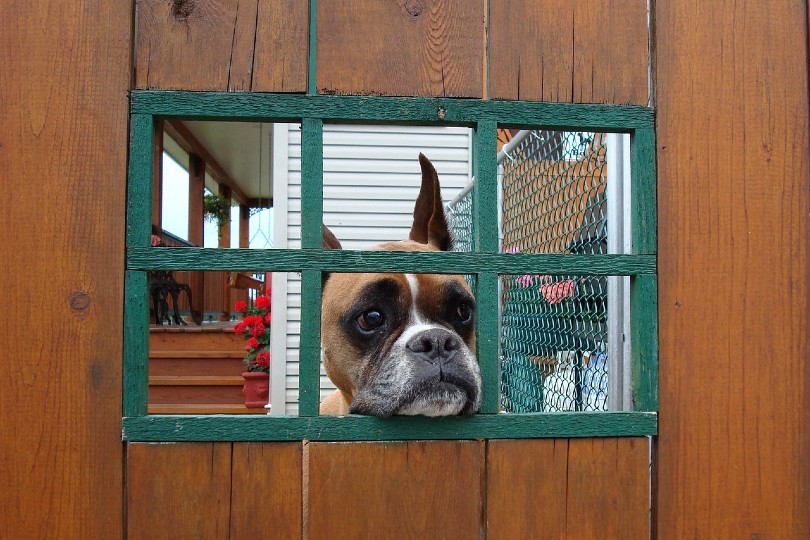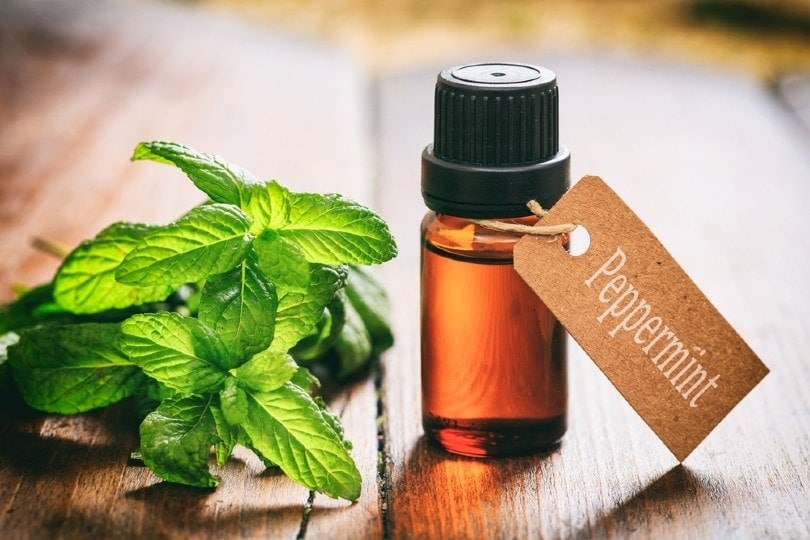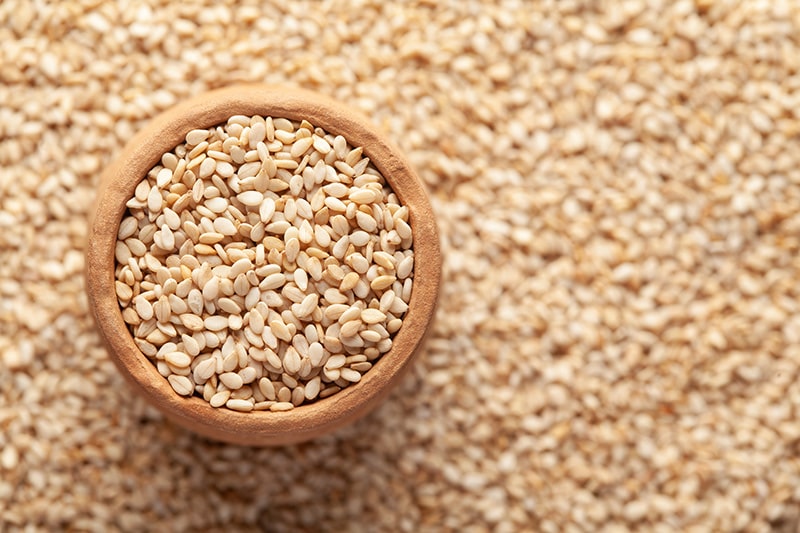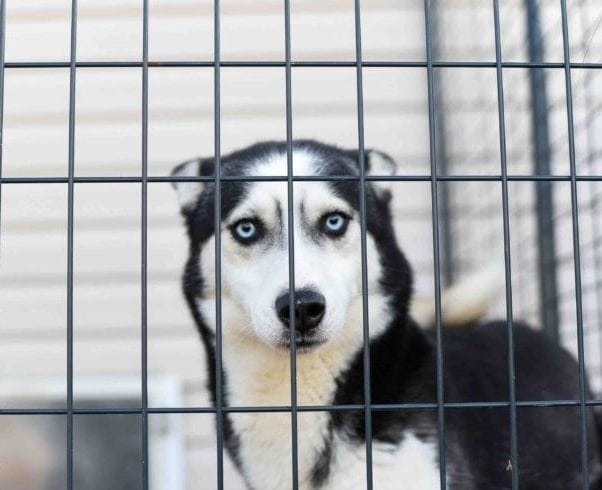What’s the Best Materials for a Dog Door Flap? 7 Great Options

Updated on

Dog doors are extremely useful in homes. After all, you don’t always have the time to take your dog out whenever they need to go. They also may want to scout around an enclosed yard at their leisure without your company. In any situation, the flap may single-handedly be the most critical part of the dog door.
The flap is what ensures that outdoor elements stay outdoors, and the inside can maintain the proper temperature. No one wants a raised energy bill. So, let’s explore the flap materials commonly seen so you can decide which one would work best for your home.
Consider the Climate You Live In
Some dog flaps will last longer in specific environments over others. If you live in milder environments, you won’t need an extremely heavy-duty flap that is designed for combating weather. However, you may want a more durable flap if you have a destructive dog.
If you don’t need a very fancy setup, you can get a normal single-flap made from your chosen material. You will also pay less on average than people who need to buy for much colder climates.
Certain doors are comprised of materials designed to withstand extreme weather conditions, such as extreme storms, bitter winds, or excessive cold. Others are made as a separation from intensely hot and sometimes humid environments.
In any regard, you will want to know the appropriate materials to avoid premature replacement. You also want to avoid energy inefficiency. With a proper flap, you can even save on your bills by cutting down on waste.
1. Vinyl Flaps
Vinyl flaps are perfect for dog doors, making them the most commonly seen for the task. Vinyl flaps can be very inexpensive, but they can also climb in price depending on how durable the piece is. Vinyl is weather and moisture-resistant so that it won’t warp from excessive temperatures or intense weather.
- Highly common
- Inexpensive
- Weather and moisture-resistant
- Can get pricey depending on durability
2. Magnetic
These flaps have magnetic metal pieces that fit around the corners of the door. This way, when your pet comes in or out and the flap closes, it will quickly snap back into place as the magnet pulls. This can be especially good for environments that experience high winds.
If you have a cat, senior animal, or small-breed dog, make sure that the magnets are not too strong for the pet to use. You will want this to be a convenience for them, as well as an efficiency for your home. Typically, animals can catch on quite quickly to the whole ordeal, making it a cinch in the long run.
Most magnet flaps come with a way to adjust the strength of the magnet as well. This way, if your pet seems to be having trouble operating it, you can make it easier for them to use.
Magnetic flaps tend to be more inexpensive but may need to be changed out more often. Depending on the durability of the overall design, they can wear out or lose shape quickly.
- Snap back into place
- Adjustable strength
- Inexpensive
- Magnets can be too strong for smaller pets
- Learning curve
3. Multiple Flaps
Sometimes, vinyl flaps come in double or even triple layers for added protection. The weight alone will help the flaps work together in unison, providing a simple entrance and exit experience for your pet. If you live in a particularly cold or hot environment, this can be useful in maintaining in-home temperatures.
It’s also a great reinforcement in high winds. If one blows open, you have another or even two to back it up. That helps provide optimal insulation. It should still be relatively simple for smaller animals to use, but they may need some training if they have initial difficulty.
- Durable
- Wide selection
- Weather resistant
- Good for insulating
- Be careful of magnet strength
- Some insulate better than others
4. Plastic Flaps
Plastic flaps are generally inexpensive, but you may need to replace them more frequently than vinyl flaps. They are usually made of PVC material, which is durable but may not be ideal in some cases.
- Inexpensive
- Not very durable
5. Curtain Strips
These door flaps are cut into strips that overlap one another. They are very affordable, and you can even buy them in bulk. They come on a spool that you can trim to size and fit your door. However, they aren’t the most energy-efficient choice, and you may have to replace them often.
- Affordable
- Available in bulk
- Can be trimmed to size
- Not energy efficient
- May need replaced often
6. Single Flaps
You can get a single flap made of plastic that is like a vinyl flap. They are solid and easy to attach to the dog door. While single flaps are durable, they may not last quite as long and can be subject to warping with extended use. Because they are plastic, they may also crack in freezing temperatures.
- Affordable
- Available in bulk
- May need replaced frequently
- Could fail in extreme temperatures
7. K-9 Composite
K-9 Composite is made from a similar material to an airplane windshield, so that should shed some light on how durable it is. These were made explicitly for the extreme cold and scorching heat. They are incredibly energy efficient and last upwards of 30 years. So, while they’re quite a high dollar upfront, it pays off in the long run.
This material can shield the home from temperatures of 50 degrees below zero to 150 degrees Fahrenheit. That is a huge range, making it ideal for colder climates like the Northern United States and Canada. It would also be fantastic for states along the coastlines who experience very hot weather in the summertime.
Not only are these doors excellent for harsh temperatures, but they are also perfect for rough or destructive dogs. They can take quite a beating without consequence. So, if you find other door flaps haven’t worked or you’re continually replacing them, it may be a good alternative to traditional approaches.
You can use this material for permanent or temporary use. They have dog doors that fit onto sliding glass doors, and you can remove them at any time. You can also secure one of these flaps to any door leading outside, attaching it permanently.
- For extreme temperatures
- For extreme weather conditions
- Durable against destructive pets
- Temporary or permanent attachment
- Expensive
Making Your Choice on the Best Dog Door Flap Material
When it comes down to it, you will have to decide just how long-lasting you want your dog door to be. If you don’t want to have to worry about any replacements for several years, paying more upfront for a flap that will work out for you, in the long run, may be worth the investment.
If you have a mild-tempered dog or small breed that will be incredibly gentle on the door, an inexpensive door can go a long way. That is also true if you don’t live in extreme temperatures. Buying what works in your situation is a matter of personal preference or environmental need.
Related Reads:
Featured Image Credit: JudaM, Pixabay











